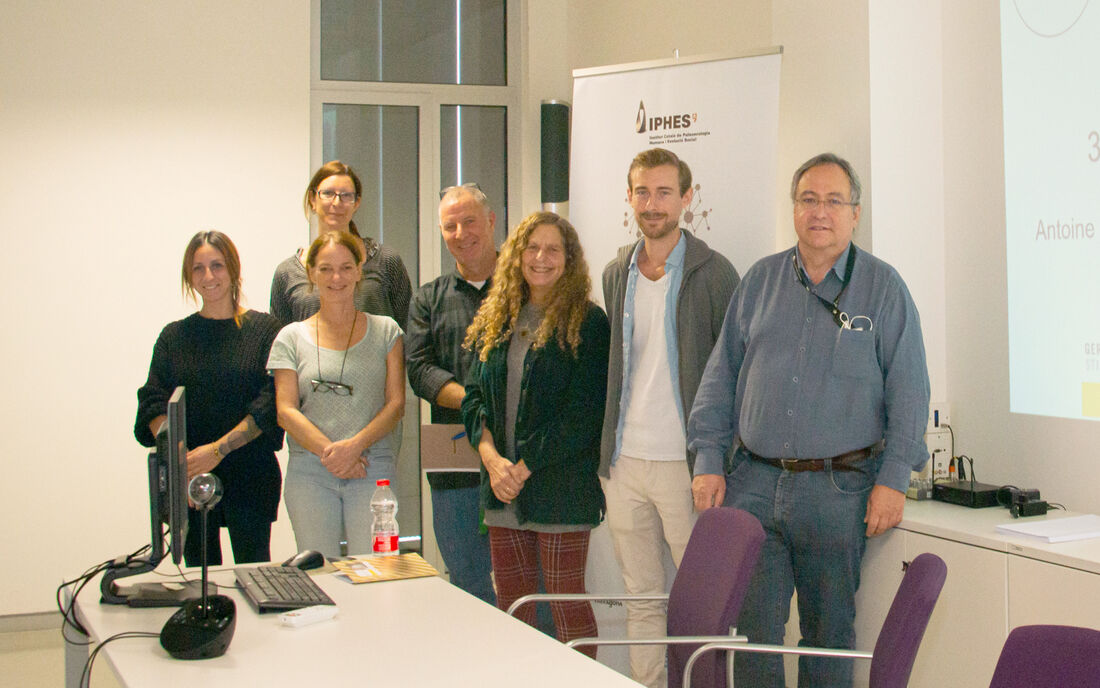An Catalan and Israeli team is working to solve the mystery of stone balls that appear in different archeological sites from 1.5 million-years ago
How these tools were developed or what they were used for is currently unknown and high-tech 3D artifact analysis is being used for this investigation This collaborative project is led by the IPHES and is financed by the Gerda Henkel Foundation
Stone balls are documented from around 1,5 million years ago in some Oldowan and Acheulian stone tool assemblages, the oldest human cultural complexes known to humankind. The presence of these spherical stone tools has puzzled researchers for more than half a century and, even now, understanding how they were made and what they were used for remains a mystery. Although some scientists believe that these tools, known as spheroids, were intentionally made, others claim that their shape was obtained accidentally by percussion activities. In addition, some researchers have proposed that their morphology must reflect a specific function, or perhaps even some kind of social or even symbolic norm.
In order to resolve this issue, a team of Catalan and Israeli specialists are trying to find answers to the questions generated by these spheroids, by analyzing almost 200 spheroidal morphotypes excavated from the ‘Ubeidiya site (Israel). They hope to find out if these objects were intentionally made using a specific operational sequence, if their form results from heavy pounding, or if they are simply used hammerstones. With this aim in mind, a series of experiments has been planned in order to obtain results that could help to clarify whether these spheroids could be the result of a complex techno-cultural scheme involving mental planning.
This is the objective of the Lower Paleolithic Spheroids Project (LPSP), led by Deborah Barsky, researcher at the IPHES-CERCA and Professor at the URV-UOC, in collaboration with the Computational Archeology Laboratory of The Hebrew University of Jerusalem (CAL-HUJI, Israel) and Tel Hai College (Upper Galilee). This project has the financial support of the Gerda Henkel Foundation (Germany).
Robert Sala, Josep Maria Vergès and Stefania Titton are among the participating members from the IPHES-CERCA and the URV (Rovira i Virgili University), as well as Leore Grosman and Antoine Muller from the CAL-HUJI and Gonen Sharon from the THC.
This international team is applying new analytical methodologies offered by the Computational Archeology Laboratory (CAL) at the Hebrew University of Jerusalem (Israel) to study an assemblage of nearly 200 spheroidal limestone tools from the Early Acheulian site of ‘Ubeidiya (Israel), dated to about 1.5 million years ago, in order to develop a methodological holotype for future interpretations.
In a first phase of the project taking place in 2019, the principal researcher, Deborah Barsky, accompanied by Stefania Titton, postdoctoral researcher Margarita Salas at the URV, went to Jerusalem to work with the CAL experts (HUJI) to select the tools to create high-precision 3D digitized artifact models for geometry, using an associated computer program developed and provided by this institute.
The second phase of the project is presently underway and consists of developing an experimental program to clarify the how these spheroidal artifacts were produced and used. In the framework of this program, limestone collected near the ‘Ubeidiya site was used to make spherical tools and computer data will be collected from the digital reproduction of both the archeological and experimental spheroids.
The development of this experimental program is currently being carried out at the IPHES-CERCA by all team members of the project, both from the Catalan and Israeli sides, in collaboration with other IPHES researchers, including: Dr. Isabel Cáceres and Dr. Amèlia Bargalló, a Juan de la Cierva postdoctoral researcher, as well as FPI predoctoral student Gorkheim Yesilova and Masters student in Quaternary Archeology and Human Evolution, Carlos Villa.
During their stay at the IPHES-CERCA, two conferences relating to the project were given by the Israeli researchers on November 17th. On the one hand, Antoine Muller (PhD student at The Hebrew University of Jerusalem, Israel) delivered the conference entitled: Making a Sphere: 3D Analysis of the 'Ubeidiya Spheroids and, on the other hand, Dr. Gonen Sharon (Tel Hai College, Upper Galilee, Israel) gave a conference entitled: Preliminary results of new excavations at Gesher Benot Ya'akov.
It is expected that the contributions from this project will provide a new operational multidisciplinary methodology helping to define and analyze spheroids more objectively, expanding our understanding of their presence during the Oldowan and into the Acheulian transition in the global archeological record.





